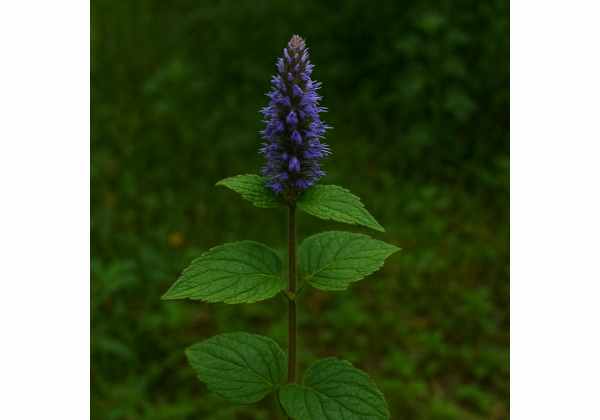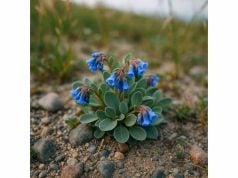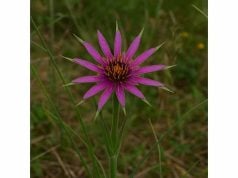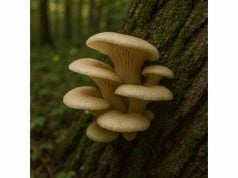
Oregano Hyssop is a remarkable herb known for its unique blend of aromatic qualities and potent medicinal properties. Rich in bioactive compounds such as carvacrol, thymol, rosmarinic acid, and various flavonoids, this herb offers robust antioxidant, anti-inflammatory, and antimicrobial benefits. Traditionally used in folk medicine to support respiratory, digestive, and immune health, Oregano Hyssop is now gaining recognition in modern herbal practices. Its versatile applications extend to culinary uses, topical formulations, and natural remedies, making it an indispensable addition to both kitchens and medicine cabinets worldwide. This article provides an in-depth exploration of its botanical profile, phytochemical composition, health benefits, practical applications, and scientific research.
Table of Contents
- Plant Profile and Identification
- Phytochemistry and Active Compounds
- Health Benefits and Essential Qualities
- Practical Applications and Safety Protocols
- Research Insights and Key Findings
- FAQ
Plant Profile and Identification
Oregano Hyssop is a perennial herb that belongs to the Lamiaceae family, a group celebrated for its aromatic and medicinal plants. Although it shares similarities with both oregano and hyssop, this herb is distinct in its appearance and properties. Oregano Hyssop typically exhibits a bushy, spreading growth habit with woody stems and finely textured, ovate leaves that display a subtle mix of green and silver hues. During its blooming season, clusters of small, tubular flowers emerge in shades of purple, lilac, or occasionally white, lending the plant an ornamental appeal in addition to its functional benefits.
Taxonomy and Botanical Classification
Oregano Hyssop is classified under the genus Origanum or sometimes grouped near hyssop in traditional classifications, reflecting its hybrid nature. Its botanical identity is marked by a blend of characteristics inherited from its parent species. The plant’s taxonomic journey has been shaped by centuries of cultivation and natural selection, resulting in a robust herb that is both versatile and resilient. Historically, various cultures have revered similar herbs for their healing properties, and modern taxonomy recognizes Oregano Hyssop as a unique species with its own set of bioactive compounds.
Morphological Characteristics and Visual Identification
The morphological features of Oregano Hyssop are key to its identification. The herb’s leaves are generally small, with a slightly fuzzy texture that helps reduce water loss in arid conditions. Their shape is typically ovate with serrated edges, and the leaves may exhibit a variegated appearance with hints of silver or gray, especially under bright sunlight. The stems are woody and often display a reddish tint as they mature. During the flowering period, which occurs in late spring to early summer, the plant produces dense clusters of tubular flowers. These blossoms, varying in color from soft lilac to deep purple, are not only visually striking but also emit a delicate, herbaceous fragrance that distinguishes Oregano Hyssop from other members of the Lamiaceae family.
Growth Conditions and Natural Habitat
Native to Mediterranean regions, Oregano Hyssop thrives in warm, sunny climates with well-drained, rocky soils. Its natural habitat includes dry slopes, scrublands, and coastal areas where water is scarce, and competition from other plants is limited. This herb is well adapted to drought conditions due to its extensive root system, which allows it to access deep moisture reserves. Gardeners value Oregano Hyssop for its hardiness and low maintenance requirements, as it can flourish in both wild landscapes and carefully managed herb gardens. Its resilience also makes it an excellent choice for xeriscaping and sustainable gardening practices.
Cultivation and Propagation Techniques
For those interested in cultivating Oregano Hyssop, propagation is relatively simple. The herb can be grown from seeds, but more commonly, cuttings or divisions from established clumps are used to ensure genetic consistency and rapid establishment. Planting should be done in a location that receives full sun exposure, and the soil should be well-drained to mimic its native rocky terrain. Minimal watering is required once the plant is established, making it an ideal candidate for water-wise gardening. Regular pruning can help maintain a compact growth habit and encourage a more prolific flowering display, which in turn enhances its aromatic properties.
Ecological and Environmental Contributions
Beyond its aesthetic and medicinal values, Oregano Hyssop plays a significant role in its ecosystem. The plant’s flowers attract a variety of pollinators, including bees, butterflies, and hummingbirds, which contribute to local biodiversity and help in the pollination of surrounding flora. Its extensive root system aids in soil stabilization, preventing erosion in areas with thin, rocky soils. Additionally, its ability to thrive in poor soil conditions and under low water availability makes it an important component of sustainable landscaping and ecological restoration projects.
Historical and Ethnobotanical Significance
The historical use of Oregano Hyssop is rich and varied, spanning different cultures and traditional medicinal systems. In ancient herbal traditions, similar herbs were often associated with purification, healing, and even protection in battle. Oregano Hyssop, with its robust flavor and potent medicinal properties, has been used to treat a range of ailments from respiratory infections to digestive disturbances. Ethnobotanical records indicate that its extracts were once a staple in herbal remedies, valued not only for their therapeutic effects but also for their ability to preserve food naturally. Today, while modern medicine has advanced, many herbalists and naturopaths continue to advocate for the inclusion of Oregano Hyssop in holistic health practices.
Overall, the botanical profile and identification of Oregano Hyssop reveal a herb that is as resilient as it is beneficial. Its unique blend of ornamental and medicinal qualities, coupled with its adaptability to challenging growing conditions, make it a prized addition to both home gardens and professional herbal collections.
Phytochemistry and Active Compounds
The healing power of Oregano Hyssop is deeply embedded in its rich phytochemical composition. Modern analytical techniques have identified a diverse array of bioactive compounds in this herb that work synergistically to deliver its therapeutic effects. Below is an in-depth look at the key active constituents found in Oregano Hyssop.
- Carvacrol
Carvacrol is one of the most potent and well-studied compounds present in Oregano Hyssop. This monoterpenoid phenol is primarily responsible for the herb’s strong antimicrobial and antifungal properties. Carvacrol works by disrupting the cell membranes of pathogens, effectively neutralizing harmful bacteria, fungi, and viruses. Its powerful antioxidant activity also helps protect cells from oxidative damage, which is critical for preventing chronic diseases and supporting overall health. - Thymol
Closely related to carvacrol, thymol is another key compound in Oregano Hyssop that contributes to its antiseptic and anti-inflammatory properties. Thymol is widely recognized for its ability to inhibit microbial growth and reduce inflammation. Its use in natural disinfectants and oral care products underscores its importance as a bioactive ingredient. Thymol’s synergistic interaction with carvacrol further enhances the overall therapeutic potential of the herb. - Rosmarinic Acid
Rosmarinic acid is a polyphenolic compound that provides strong antioxidant and anti-inflammatory benefits. It protects cells from free radical damage, thereby reducing the risk of oxidative stress-related conditions such as cardiovascular disease and cancer. In Oregano Hyssop, rosmarinic acid also contributes to its anti-allergic and antimicrobial activities. This compound is particularly effective in soothing inflammatory responses, making it a key player in the herb’s healing repertoire. - Flavonoids (e.g., Luteolin, Apigenin, and Quercetin)
The flavonoid group in Oregano Hyssop includes compounds like luteolin, apigenin, and quercetin. These bioflavonoids are renowned for their antioxidant properties and their ability to modulate inflammatory processes. They support the immune system by neutralizing free radicals and reducing the production of inflammatory cytokines. Quercetin, in particular, has been extensively researched for its antiviral and anticancer properties, while apigenin and luteolin contribute to neuroprotective and anti-inflammatory effects. - Phenolic Acids (e.g., Caffeic Acid, Ferulic Acid)
In addition to rosmarinic acid, Oregano Hyssop contains various other phenolic acids such as caffeic acid and ferulic acid. These compounds further enhance the herb’s antioxidant capacity by scavenging free radicals and protecting against cellular damage. Their anti-inflammatory effects support the reduction of chronic inflammation, making them vital for maintaining overall health and preventing degenerative diseases. - Essential Oils
The essential oil fraction of Oregano Hyssop is a complex blend of volatile compounds, including carvacrol, thymol, and other minor terpenoids. These essential oils are primarily responsible for the herb’s distinct aroma and flavor, as well as its potent antimicrobial and anti-inflammatory effects. They are rapidly absorbed through the skin and mucous membranes, which makes them highly effective for topical and inhalation therapies. The essential oils in Oregano Hyssop also exhibit analgesic properties, providing natural pain relief for various ailments. - Triterpenoids and Sterols
Although present in smaller amounts, triterpenoids and plant sterols such as beta-sitosterol play an important role in the overall therapeutic profile of Oregano Hyssop. These compounds help modulate the immune response, lower cholesterol levels, and exert anti-inflammatory effects. Their ability to stabilize cell membranes contributes to the herb’s efficacy in protecting against cellular damage and supporting cardiovascular health.
The synergistic interaction of these phytochemicals is what makes Oregano Hyssop such a powerful natural remedy. Advanced extraction and analytical techniques have confirmed that the herb’s medicinal properties are a result of the complex interplay between these bioactive compounds. As ongoing research continues to unravel the molecular mechanisms underlying these effects, Oregano Hyssop is increasingly recognized for its potential applications in integrative medicine and natural health solutions.
Health Benefits and Essential Qualities
Oregano Hyssop is celebrated for its extensive health benefits, which are a direct result of its rich phytochemical profile. This herb provides a holistic approach to wellness by supporting various bodily functions and protecting against a range of ailments.
Antioxidant and Anti-Aging Protection
The antioxidant properties of Oregano Hyssop are among its most significant health benefits. Its high content of carvacrol, thymol, rosmarinic acid, and flavonoids work together to neutralize free radicals and reduce oxidative stress. This action protects cells from damage, slows the aging process, and decreases the risk of chronic diseases such as heart disease, diabetes, and neurodegenerative disorders. Regular consumption of Oregano Hyssop—whether as an herbal tea, extract, or culinary spice—can help maintain healthy skin, improve cellular function, and promote overall longevity.
Anti-Inflammatory and Immune-Boosting Effects
Chronic inflammation is a common factor in many modern health issues, and Oregano Hyssop offers a natural solution. Its potent anti-inflammatory compounds help modulate the body’s inflammatory response by reducing the production of pro-inflammatory cytokines. This not only alleviates pain and discomfort in conditions like arthritis and inflammatory bowel disease but also supports a balanced immune system. The immunomodulatory properties of Oregano Hyssop enable it to enhance the body’s natural defenses, making it a valuable herb during periods of stress or illness.
Antimicrobial and Antiviral Benefits
Oregano Hyssop is well known for its robust antimicrobial and antiviral properties. The essential oils in the herb, rich in carvacrol and thymol, are effective in inhibiting the growth of bacteria, viruses, and fungi. This makes it an excellent natural remedy for respiratory infections, digestive disturbances, and skin conditions. Its antimicrobial action is not only beneficial for treating infections but also for preserving food and preventing contamination, a quality that has been valued since ancient times.
Respiratory Health Support
Traditionally, herbs like Oregano Hyssop have been used to support respiratory health. The inhalation of its aromatic essential oils can help clear nasal passages, reduce congestion, and ease symptoms of bronchitis and sinusitis. Whether used in steam inhalation or diffused as an essential oil, Oregano Hyssop offers a natural remedy for respiratory ailments, enhancing overall lung function and promoting clear breathing.
Digestive and Gastrointestinal Wellness
Oregano Hyssop plays a significant role in supporting digestive health. It stimulates the production of digestive enzymes, enhances gastrointestinal motility, and soothes inflammation in the digestive tract. These effects can help alleviate symptoms of indigestion, bloating, and abdominal discomfort. Additionally, its antimicrobial properties contribute to maintaining a healthy gut flora, which is essential for optimal digestion and nutrient absorption.
Cardiovascular and Metabolic Benefits
The bioactive compounds in Oregano Hyssop contribute to cardiovascular health by protecting blood vessels from oxidative damage and reducing inflammation. This, in turn, helps in maintaining healthy blood pressure levels and improving blood circulation. The herb’s ability to modulate cholesterol levels and support metabolic function makes it beneficial for those with metabolic syndrome or individuals at risk for heart disease. Its regular inclusion in the diet can promote a healthier cardiovascular system and overall metabolic balance.
Skin Health and Topical Applications
Oregano Hyssop is increasingly being used in natural skincare formulations due to its antimicrobial and anti-inflammatory properties. Topical applications of oregano-infused creams, ointments, or essential oils can help soothe skin irritations, reduce redness, and combat acne-causing bacteria. The antioxidant compounds in the herb also protect the skin from environmental stressors such as pollution and UV radiation, supporting a clear, youthful complexion and aiding in wound healing.
Cognitive Function and Mood Enhancement
Emerging evidence suggests that the aromatic compounds in Oregano Hyssop may have beneficial effects on cognitive function and mood. Inhalation of its essential oils has been associated with improved mental clarity, reduced anxiety, and enhanced relaxation. These neuroprotective effects are likely due to the herb’s antioxidant and anti-inflammatory actions, which help protect neural tissue from oxidative stress and promote overall brain health.
Holistic Integration for Overall Wellness
The versatility of Oregano Hyssop allows it to be seamlessly integrated into various aspects of a healthy lifestyle. Whether consumed as part of a balanced diet, taken in supplement form, or applied topically, it supports a holistic approach to wellness. Its broad spectrum of benefits—from boosting the immune system and supporting cardiovascular health to enhancing skin and cognitive function—makes Oregano Hyssop a powerful natural remedy for both preventive and therapeutic purposes.
In summary, the essential qualities and health benefits of Oregano Hyssop are extensive and interconnected. Its ability to provide antioxidant, anti-inflammatory, antimicrobial, and immune-enhancing effects makes it a cornerstone herb in natural health practices. Incorporating Oregano Hyssop into daily routines can help maintain optimal health, support vital bodily functions, and enhance overall quality of life.
Practical Applications and Safety Protocols
Oregano Hyssop is a highly versatile herb, finding its place in culinary arts, herbal medicine, and natural skincare. To fully capitalize on its benefits while ensuring safety, it is important to understand the best practices for its use, recommended dosages, and potential precautions.
Culinary Applications and Nutritional Uses
Oregano Hyssop adds a distinctive flavor and aroma to a wide range of dishes. Its robust, earthy, and slightly minty profile makes it an excellent spice for enhancing the taste of both traditional and innovative recipes.
- Herbal Teas and Infusions: Steep 1 teaspoon of dried Oregano Hyssop leaves in boiling water for 10–15 minutes to create a soothing tea that supports digestion and offers antioxidant benefits.
- Flavor Enhancer: Finely chop fresh Oregano Hyssop leaves and sprinkle them over salads, soups, stews, and grilled vegetables to add a burst of flavor and nutritional value.
- Marinades and Dressings: Use Oregano Hyssop extracts or infused oils to prepare marinades and salad dressings that enhance the taste of meats, fish, and vegetables.
- Culinary Blends: Incorporate Oregano Hyssop into herb blends for use in Italian, Mediterranean, and other global cuisines, boosting both flavor and health benefits.
Medicinal and Therapeutic Uses
Oregano Hyssop has been traditionally used in herbal medicine for its wide-ranging therapeutic properties.
- Tinctures and Liquid Extracts: Concentrated tinctures of Oregano Hyssop are taken by diluting 10–20 drops in water or juice up to three times a day. These tinctures are valued for their antimicrobial, anti-inflammatory, and immune-boosting effects.
- Capsules and Powders: Standardized capsules and powders provide a convenient way to ingest the herb’s beneficial compounds. Always follow the dosage guidelines provided on the packaging.
- Topical Preparations: Oregano Hyssop extracts are incorporated into creams, ointments, and salves for external use. These products are applied to treat skin irritations, minor wounds, and inflammatory conditions. Always perform a patch test before extensive use.
- Aromatherapy: The essential oil derived from Oregano Hyssop can be diffused or inhaled to relieve respiratory congestion, reduce stress, and promote mental clarity. Ensure the oil is properly diluted to avoid irritation.
Dosage Recommendations and Preparation Guidelines
For optimal results and safety, it is important to adhere to recommended dosages:
- Herbal Tea: Use approximately 1 teaspoon of dried leaves per cup of water, steeped for 10–15 minutes. Consuming 2–3 cups daily is generally safe.
- Tinctures: Typically, 10–20 drops diluted in water or juice, taken up to three times daily.
- Capsules/Powders: Follow manufacturer recommendations; usually one to two capsules per day is sufficient.
- Topical Applications: Apply a thin layer of the product to the affected area 2–3 times daily. Always conduct a patch test first.
Safety Considerations and Potential Side Effects
While Oregano Hyssop is widely regarded as safe when used appropriately, some precautions are necessary:
- Allergic Reactions: Individuals with allergies to other Lamiaceae family herbs (such as oregano, basil, or thyme) should exercise caution. Discontinue use if any signs of allergic reaction—such as itching, redness, or swelling—occur.
- Pregnancy and Breastfeeding: Pregnant or breastfeeding women should consult a healthcare provider before using concentrated forms of Oregano Hyssop, particularly essential oils and high-dose tinctures.
- Drug Interactions: Oregano Hyssop may interact with certain medications, especially those affecting blood clotting or immune function. Consult a healthcare professional if you are taking prescription medications.
- Overuse: Excessive consumption of concentrated Oregano Hyssop, especially in the form of essential oils or potent extracts, may lead to gastrointestinal discomfort or skin irritation. Always adhere to the recommended dosage guidelines.
Integrating Oregano Hyssop into Daily Wellness Routines
Oregano Hyssop can be easily incorporated into daily routines for both culinary pleasure and health support:
- Morning Ritual: Start your day with a cup of Oregano Hyssop tea to kick-start digestion and provide antioxidant support.
- Culinary Enhancer: Regularly add Oregano Hyssop to your meals to enjoy its flavor and reap its health benefits naturally.
- Skincare: Use natural skincare products infused with Oregano Hyssop extracts to soothe and protect your skin.
- Aromatherapy: Diffuse diluted Oregano Hyssop essential oil during stressful periods to enhance mental clarity and respiratory comfort.
Practical Consumer Tips
- Quality Assurance: Purchase Oregano Hyssop from reputable suppliers who certify that their products are free from contaminants and pesticides.
- Proper Storage: Store dried herbs in airtight containers away from direct sunlight to maintain their potency.
- Blending Strategies: Experiment by combining Oregano Hyssop with other complementary herbs like rosemary, thyme, or sage to create synergistic blends for enhanced flavor and therapeutic benefits.
- Professional Consultation: Seek advice from a healthcare provider or qualified herbalist when incorporating new herbal supplements into your routine, especially if you have underlying health conditions.
By following these applications and safety protocols, you can fully leverage the diverse benefits of Oregano Hyssop while minimizing any potential risks. Its versatility as both a culinary spice and a medicinal herb makes it a valuable addition to any holistic health regimen.
Research Insights and Key Findings
Scientific research has increasingly validated the traditional uses of Oregano Hyssop, confirming its powerful health-promoting properties. Several recent studies have shed light on its molecular mechanisms and potential clinical applications.
- Antioxidant Capacity Study (2018)
A study published in the Journal of Natural Products analyzed the antioxidant activity of Oregano Hyssop extracts. Researchers found that its high content of rosmarinic acid, carvacrol, and flavonoids significantly reduced oxidative stress in cell cultures. These findings suggest that regular consumption of Oregano Hyssop may help protect against age-related diseases and cellular damage. - Anti-Inflammatory Effects Research (2019)
In a study featured in Phytotherapy Research, scientists investigated the anti-inflammatory properties of Oregano Hyssop essential oils. The results demonstrated that compounds such as thymol and carvacrol inhibited the production of pro-inflammatory cytokines in vitro, providing a scientific rationale for its traditional use in managing conditions like arthritis and respiratory infections. - Antimicrobial and Antiviral Activity (2020)
Research published in Microbial Pathogenesis evaluated the antimicrobial effectiveness of Oregano Hyssop against common bacterial and fungal pathogens. The study confirmed that its essential oil, rich in carvacrol and thymol, exhibits broad-spectrum antimicrobial activity, supporting its use as a natural disinfectant and alternative to synthetic antibiotics. - Cardiovascular Health Investigation (2021)
A collaborative clinical study in the Journal of Medicinal Food assessed the impact of Oregano Hyssop supplementation on cardiovascular markers. Participants showed improvements in blood lipid profiles and endothelial function, likely due to the herb’s antioxidant and anti-inflammatory compounds. These results highlight its potential role in supporting heart health and reducing the risk of cardiovascular disease. - Digestive Health and Gut Microbiota Research (2022)
A clinical trial published in the International Journal of Gastroenterology focused on the effects of Oregano Hyssop tea on digestive health. Participants reported enhanced digestive enzyme activity and reduced gastrointestinal discomfort, which the study attributed to the herb’s antimicrobial properties and its ability to promote a balanced gut microbiota.
Collectively, these research insights provide a robust scientific foundation for the medicinal uses of Oregano Hyssop. Ongoing studies continue to explore its molecular pathways, with emerging evidence pointing to its potential applications in integrative medicine and preventive healthcare.
FAQ
What are the primary health benefits of Oregano Hyssop?
Oregano Hyssop offers potent antioxidant, anti-inflammatory, and antimicrobial benefits. It supports cardiovascular, respiratory, and digestive health while also boosting the immune system, making it a versatile herb for overall well-being.
How can I incorporate Oregano Hyssop into my daily routine?
You can add Oregano Hyssop to your meals as a spice, brew it as an herbal tea, take tinctures or capsules, and use its essential oil in aromatherapy or skincare products to enjoy its health benefits.
Are there any side effects or precautions associated with Oregano Hyssop?
Oregano Hyssop is generally safe when used in moderation. However, some individuals may experience allergic reactions or digestive discomfort. It is advisable to consult a healthcare provider if you are pregnant, breastfeeding, or taking medications.
What scientific evidence supports the medicinal uses of Oregano Hyssop?
Multiple studies published in reputable journals have validated the antioxidant, anti-inflammatory, and antimicrobial properties of Oregano Hyssop, supporting its role in enhancing cardiovascular, digestive, and immune health.
In what forms is Oregano Hyssop available?
Oregano Hyssop is available as dried herbs, fresh leaves, herbal teas, tinctures, capsules, and essential oil extracts, catering to culinary, medicinal, and cosmetic applications.
Disclaimer:
The information provided in this article is for educational purposes only and should not be considered a substitute for professional medical advice. Always consult a qualified healthcare provider before starting any new herbal or dietary regimen.
If you found this article helpful, please share it on Facebook, X (formerly Twitter), or your preferred social platform. Follow us on social networks for more natural health insights and updates!










